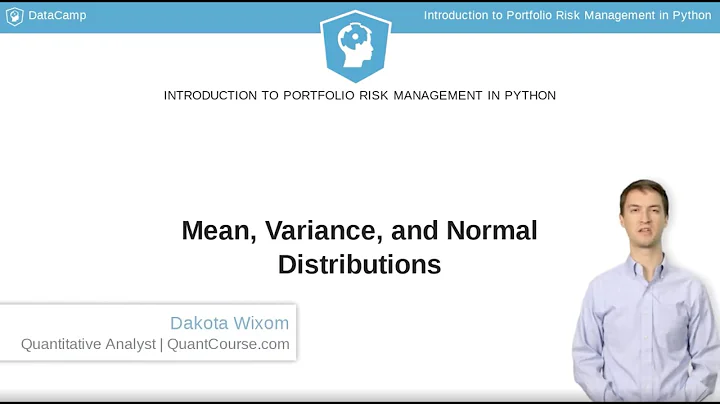How to generate a distribution with a given mean, variance, skew and kurtosis in Python?
Solution 1
How about using scipy? You can pick the distribution you want from continuous distributions in the scipy.stats library.
The generalized gamma function has non-zero skew and kurtosis, but you'll have a little work to do to figure out what parameters to use to specify the distribution to get a particular mean, variance, skew and kurtosis. Here's some code to get you started.
import scipy.stats
import matplotlib.pyplot as plt
distribution = scipy.stats.norm(loc=100,scale=5)
sample = distribution.rvs(size=10000)
plt.hist(sample)
plt.show()
print distribution.stats('mvsk')
This displays a histogram of a 10,000 element sample from a normal distribution with mean 100 and variance 25, and prints the distribution's statistics:
(array(100.0), array(25.0), array(0.0), array(0.0))
Replacing the normal distribution with the generalized gamma distribution,
distribution = scipy.stats.gengamma(100, 70, loc=50, scale=10)
you get the statistics [mean, variance, skew, kurtosis]
(array(60.67925117494595), array(0.00023388203873597746), array(-0.09588807605341435), array(-0.028177799805207737)).
Solution 2
Try to use this:
Return the Gaussian expanded pdf function given the list of 1st, 2nd moment and skew and Fisher (excess) kurtosis.
Parameters : mvsk : list of mu, mc2, skew, kurt
Looks good to me. There's a link to the source on that page.
Oh, and here's the other StackOverflow question that pointed me there: Apply kurtosis to a distribution in python
Related videos on Youtube
Remi.b
Updated on June 04, 2022Comments
-
 Remi.b almost 2 years
Remi.b almost 2 yearsrandom.gauss(mu, sigma)
Above is a function allowing to randomly draw a number from a normal distribution with a given mean and variance. But how can we draw values from a normal distribution defined by more than only the two first moments?
something like:
random.gauss(mu, sigma, skew, kurtosis)
-
 Bennett Brown over 10 yearsAny normal distribution has skew 0 and kurtosis 0. Use a different family of distributions.
Bennett Brown over 10 yearsAny normal distribution has skew 0 and kurtosis 0. Use a different family of distributions. -
 Bennett Brown over 10 yearsBeware, there are several ways to define the calculation for skew and kurtosis. Moments are not equivalent to mean, variance, skew, and kurtosis, though they have the same gist.
Bennett Brown over 10 yearsBeware, there are several ways to define the calculation for skew and kurtosis. Moments are not equivalent to mean, variance, skew, and kurtosis, though they have the same gist. -
 Bennett Brown over 10 yearsAlso, the moments do not specify a unique distribution. See [this similar question but asking about R: stackoverflow.com/questions/4807398/…
Bennett Brown over 10 yearsAlso, the moments do not specify a unique distribution. See [this similar question but asking about R: stackoverflow.com/questions/4807398/…
-





